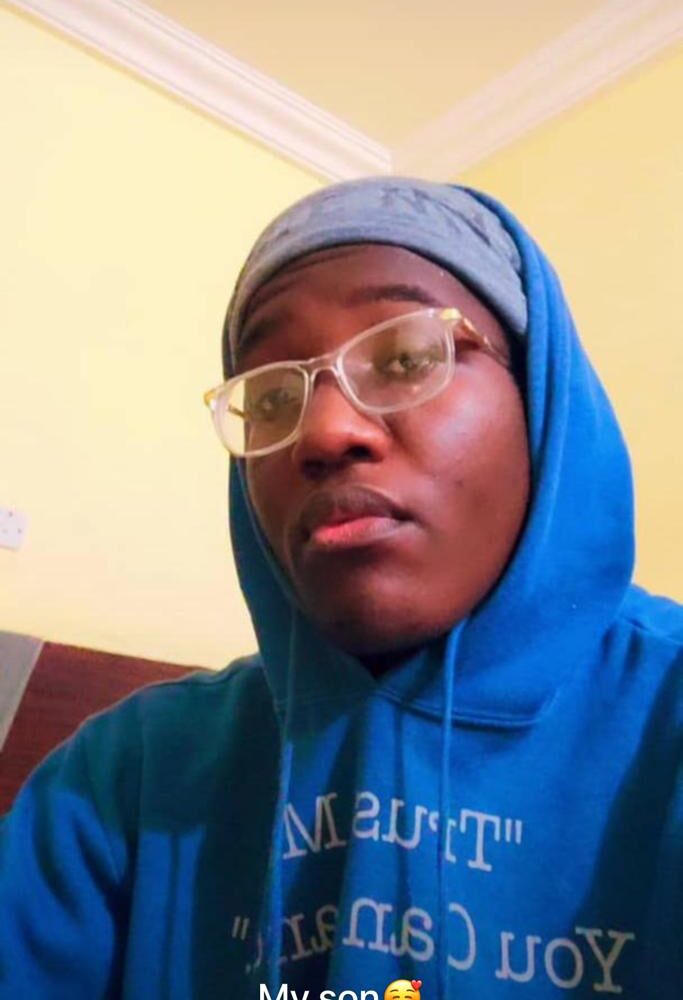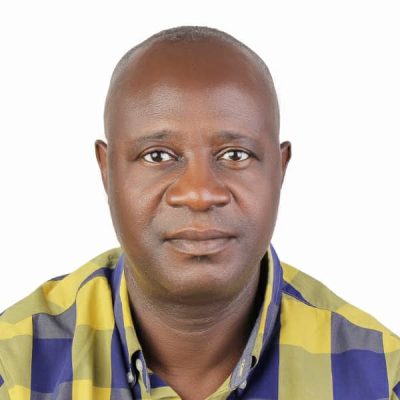(This is my COE Minna first lecture of second semester, with 100 Level Students).
Bishop Samuel Ajayi Crowther authored a NUPE BOOK in 1864. He came to Nupe land in 1860 after writing in Yoruba and Igbo languages. He arrived at Etsu Saba’s palace where he informed Etsu Nupe of his English Language teaching mission.
It is axiomatic that our Emirs or Kings are highly accomodating. Etsu Saba accepted and accommodated him but ordered him to go eastward of Nupe land to settle therein. The Bishop, appreciating the hostage, settled in Lokoja and started writing in Nupe language since 1864 after he must have learnt it for four years.
The Bishop thought it wisely, that no one writes in a particular dialect without knowing its letters. As at then, the Europeans already had their letters and he smartly adopted theirs without creating a new one. What was he doing? He was writing down whatever his unofficial Nupe teachers and settlers were telling him. Although the Nupes could neither read nor write with English letters, but they started using AJEMI long before then and that’s how Bishop Samuel Ajayi Crowther understood that what the Nupes were uttering is the same with the English letters.
The English alphabets are 26 and the same thing goes with the Nupe alphabets. Although, he omitted letters Q and X because, letter K was used in place of letter Q and “S” for “X”.
To make everything 26 alphabets, he doubled letters “o”, “s” and “z” by adding some tonation signs on top of their seconds.
After this calculated effort by Samuel Ajayi Crowther in keeping the Nupe alphabets to be 27, he proceeded to CONSONANTS.
All the dialects in this world can be written or read with the help of consonants. Without the consonants, you would hardly read meaning out of it. If you want your Nupe speaking, writing and reading correctly, you must learn the Nupe consonants well.
Samuel Ajayi Crowther formalised the Nupe consonants to be 21. Subtracting five vowels from the 26 alphabets gives you the remaining 21 consonants. He thereafter, added another 6 consonant clusters, viz, “DZ”, another “DZ” with a v shape on top, “GB”, “KP”, “TS” and anothet “TS” with a v shape on top.
This is the Nupe Orthography propounded by Bishop Samuel Ajayi Crowther.
According to him, once you master all these, your Nupe writing and reading skills would be perfectly okey. Finishing this, he wrote another book of Nupe history stating therein how they came about. He said, the Nupes are developing and once they know how to read and write in their dialect, they will correct the mistakes of the Europeans.
If you go through Bishop Samuel’s write up, there are a lot of spelling errors or mistakes because he is not of a Nupe origin who could pronounce all the words rightly.
Therefore, because he wrote Yoruba book earlier, he opined that Nupe is related to Yoruba and Hausa and he came up with ‘dialectical mark’ to ease his pronunciations forever. And he started it with INTRODUCTION OF INTONATION MARK which was first of its kind circa 1864.
Coming with these intonation marks, they were accepted. Reason being that, neither could we read nor write nor it is axiomatic that you can’t give what you don’t have and you only take what you see. As it is today, if we are to hold unto what is not available because, as said, the Scholars are the heirs of the Messengers. Whatever is narrated to us must be complied with.
Samuel Ajayi Crowther penned down that “the future Nupe generations will correct our mistakes and right our wrongs.”
51 years after, precisely 1915, A.W. Banfield emerged.
Nupe has a proverb that says, “old books are looked into in writing a new book.” As A.W Banfield arrived Nupe land, he sourced Mr. Samuel Ajayi’s write up and went through the Nupe alphabets written and saved by the later. That prompted Banfield to enter the Nupes, engage them in discussions so as to understand Nupe well.
Thank God for this effort exerted by Ajayi Crowther, though, Nupe supposed to have downward tonation signs.
A. W. Banfield was the first to teach Nupe Nasal sounds. All he did was to adopt the letters used by Ajayi Crowther and added some other letters known as Nasal sounds in 1915, that is exactly 51 years after Ajayi Crowther departed.
A.W Banfield entered Nupe kingdom in 1910 and made it upon his coming, he added letter A” in addition to what Samuel Ajayi wrote.
A.W Banfield doubled his letter A by making the second one with some tonation signs below it and declared it to be of a nasal sound. It is written as “A” with a dot below it. Others are “N, O, S and Z” all with a dot below them. These are the additional letters introduced by A.W Banfield in addition to what Mr. Samuel Ajayi propounded.
After him, lot of Nupe authors emerged due to their efforts in writing and developing the language, some of which are; Late Rev. Amos, Manko Angulu from University of Ibadan, Manman Jiya Vatsa, J.B Adams from Patigi e.t.c.
Manman Jiya Vatsa said nothing on Nupe writing but delved into writing Nupe poems for people to know of his Nupe origin.
It may interest you to know that we have three Types of Nupe but which among them writes? This is because as at 1864, even the white men alluded to the fact that it is only one Nupe style people have been writing with which is the Nupe of Bini or Bida (part of Lapai, part of Agaie, the whole of Bida, part of Edati and part of Kutigi). From Mokwa up to Kwara are not included.
The three types of Nupe are:-
1. Nupe Bini are the ones mentioned above to be Bida Nupes
2. Nupe Gbede. These are Nupes in Mokwa, Patigi, Lafiyagi, Tsonga and Tsaragi. They are named Nupe Gbede because of the Yoruba assent that adulterated their Nupe tongues
3. Nupe kin tako. These are the Ganaganas, Abawa, Kakanda, Dibbo and Basange people.
The Europeans argued that the way Kano’s hausa language is used in writing not because it is the best, but for it being in the middle is the same reason Nupe of Bini is used in writing the Nupe language.
Angulu and J. B. Adam also wrote in Nupe language. Alhaji Al-hassan Wasagi came up with his own Nupe Orthography said that some letters were omitted and added it up which made it 31 consonants. Why? Alhaji alhassan Wasagi is a core Nupe man who added some letters. Authors like J. B. Adams and Angulu were not fond of adding anything to what the Europeans wrote down. Wasagi added 5 letters to the 26 known letters. He wrote some works in Nupe wherein he rejected the letters adopted from the Europeans because it confuses and wastes time.
Ambassador Solomon Yisa who wrote a Nupe dictionary also rejected the use of this foreign letters because
1. It wastes time and
2. It is inconsistent.
Aftet their rejection, another author by name, Isyaku Bala Ibrahim accepted the European work but opined that there are some corrections to be made like a tri-cluster consonant which was not noted by them. They stopped at double consonants known as Di consonant. Some Nupe words have three consecutive consonants like the word, TSWashi e.t.c.
According to the Europeans, the Di-consonants are 40 in Nupe, originally, they are 61. deducting 40 from it makes it 21 which are single cosonants and the five vowels plus the 21 will give you the 26 alphabets as propounded by the Europeans. And why won’t Nupe have 21 consonants? If you can remember vividly, letters Q and X are not part of Nupe letters. That reduced it to 19 consonants. If you minus 19 from 61, it gives you 42. If you deduct 4 from 42, it remains 38 which is the number for the double consonants and the tri-cluster consonants are 4. All these are referred to as CONSONANT CLUSTER in English language. Whatever is above 1, from 2, 3, 4 upward, is known as Consonant cluster.
According to Isiyaku Bala Ibrahim, Nupe has 61 consoant letters. Prof (Hon) Adamu Idris Manarakis in 2012 aligned himself to the opinion and calculation of Isyaku Bala Ibrahim but disagreed with some Hausa letteters and vowels. Isyaku calculated his vowels to be 15 but to Prof. Manarakis (Tashiru Nupe), after due consideration, the vowels are 5. Manarakis disregarded the tonation signs and letters and opined their uselessness. They may only be useful in tenses.
A cursory look at the Ognignot or Amazon would reveal only what the Europeans did is uploaded but the Nupe writers have started an extensive research or write ups.
Samuel Ajayi succinctly wrote and pre-informed us that when the Nupes become good in reading and writing, they would right the wrong. Till now, some people are still working with the work of the Europeans abandoning the good information of Samuel Ajayi, though, would one day turn history.
The Nupe Orthographical constituents are four:
1. Letters/Alphabets. The Nupe alphabets are 24. This is because, as earlier explained, there are no letters Q and X in Nupe. The Q is replaced and represented with K and X with S respectively.
2. Vowels. There are 5 Nupe vowels as well namely, Aa, Ee, Ii, Oo and Uu
3. Consonants. These are 61 in number for Nupe language.
4. Article. If you are a good language speaker who reads alot, you will agree that in Samuel Ajayi Crowther’s write up, he made mention of Article for you to know and acknowledge its relevancy. The English article is different from that of the Nupes’ although there are some that are the same like a and an.
The most familiar Nupe articles are, Aa, Ee, Ii, Oo and Uu only and that is why we refer to them as (Nupe Articles). And why are they referred to as articles? Let’s cite an example. “Cin A le” is different from “Cinle”. The former carries the “A” artice while the latter carries not. The former is referring to many while the latter is alluding to singular.
Another example, “Nupe min yo” is wrong. The correct form is “Nupe min yi o” The former is written dirrectly the way it is pronounced which is wrong. The latter which carries letter “o” at the end is the correct one and that is the article.
The U in “Nyi u” is diferent from the one in “nyaba u nyi”. The former means “his/hers”. etc.
These are the constituents of the Nupe Orthography. These were all worked upon before now by our predecessors and we are now enjoying it stresslessly. Therefore, the Nupe speaking people, especially, those in Higher Institutions of learning, in Nigeria or abroad, should not joke with learning this Nupe language.
May God guide us and lead us aright.





